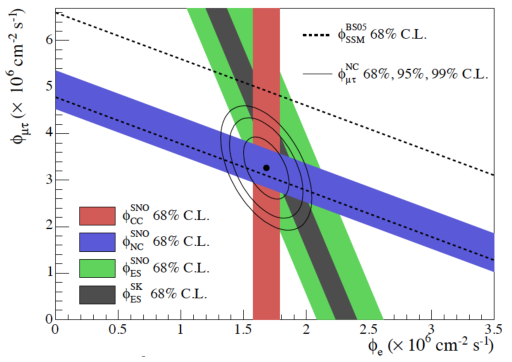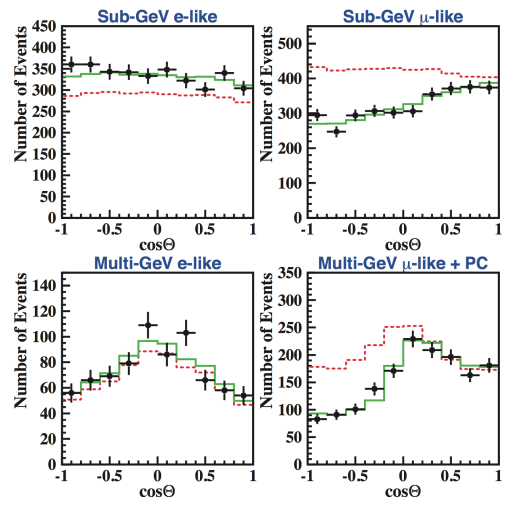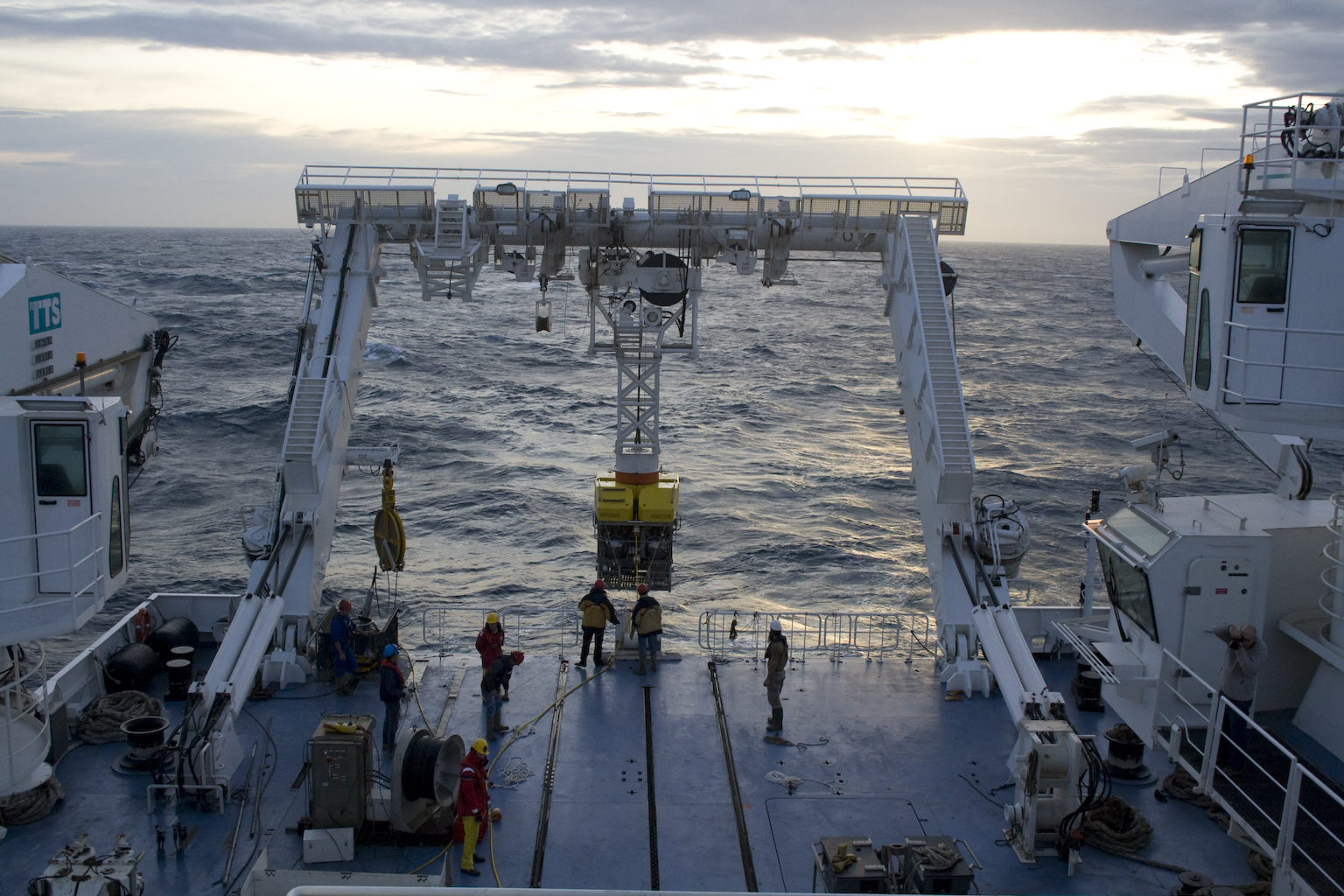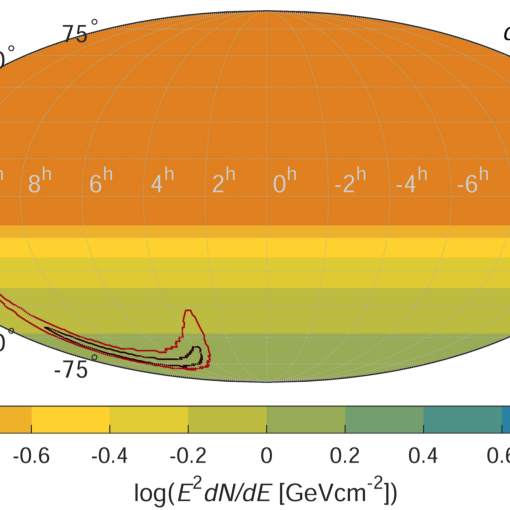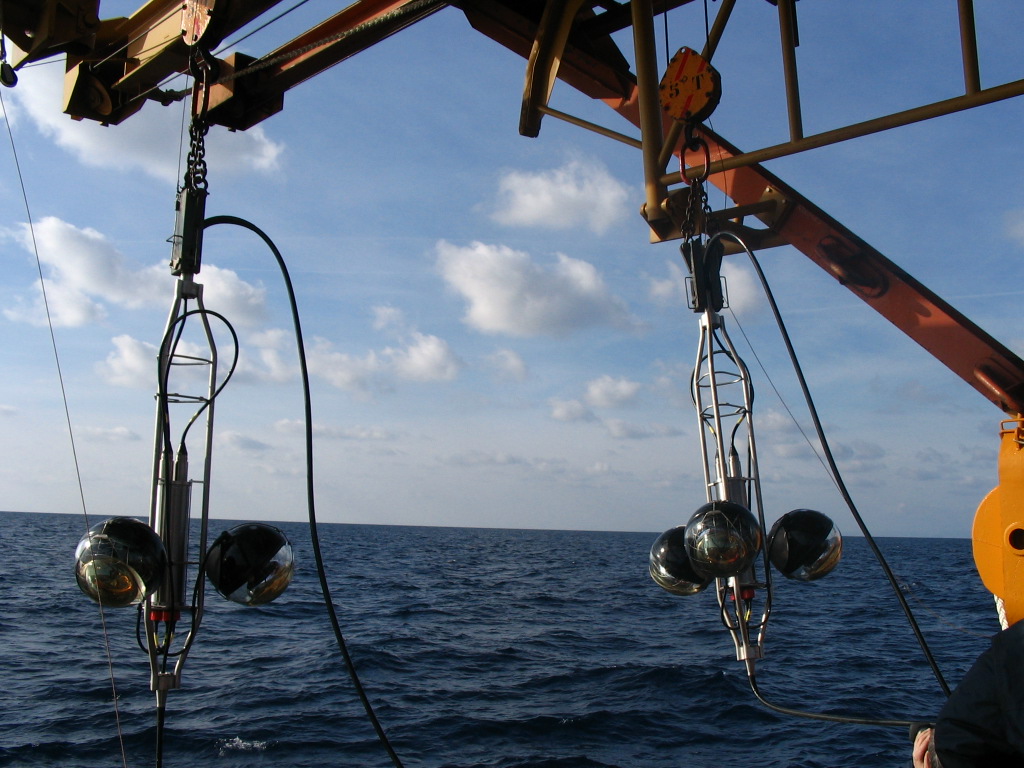The ANTARES Collaboration congratulates Takaati Kajita and Arthur B. McDonald who were awarded on October 6th the Nobel Prize in Physics 2015 for “the discovery of neutrino oscillations, which shows that neutrinos have masses”. Read the Press Release of the Royal Swedish Academy of Science.
Some of the results obtained by A. B. McDonald and the SNO Collaboration, related to solar neutrinos, are summarised in Figure 1 below (see also the SNO Page and Ahmad et al., 2002). The results obtained by T. Kajita and the Super-Kamiokande Collaboration, related to atmospheric neutrinos, are shown in Figure 2 (see also the SK Page and Fukuda et al., 1999).
In 2012, the ANTARES Collaboration reported the observation of oscillations from atmospheric muon neutrinos, yielding an independent measurement of the oscillation parameters. This was obtained using muon tracks with energies as low as 20 GeV, while the telescope was primarily optimised for TeV neutrino energies. The results were presented in Measurement of Atmospheric Neutrino Oscillations with the ANTARES neutrino telescope.
